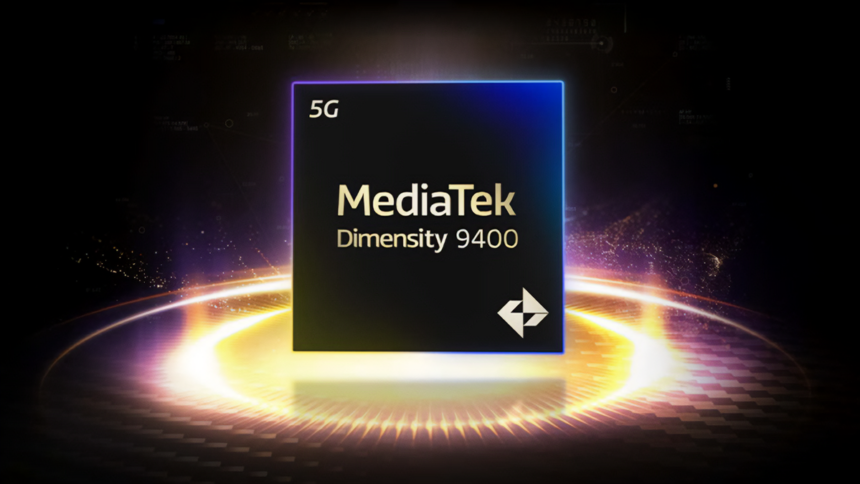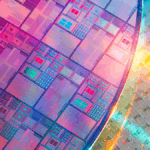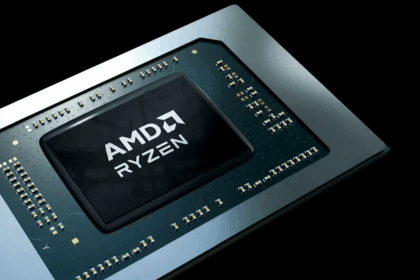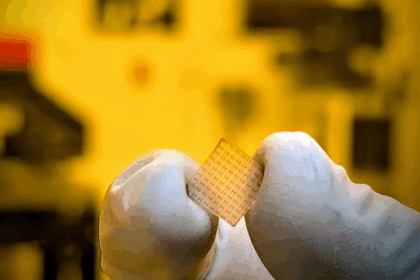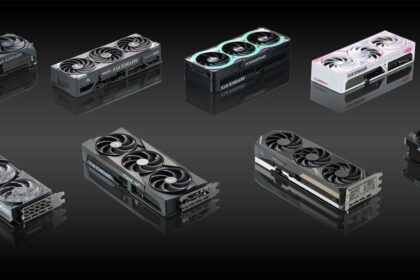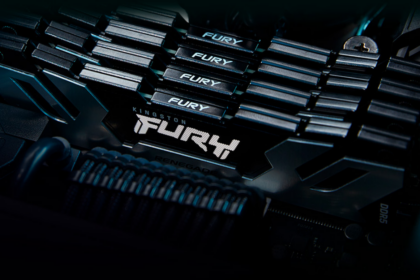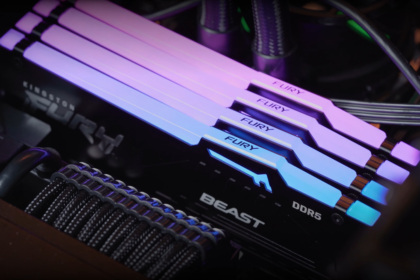As confirmed last month, MediaTek officially unveiled the Dimensity 9400 chipset this Wednesday (9th), aimed at premium Android smartphones. The new platform boasts several upgrades, including the same 3 nm process used in Apple’s A18 Pro chip. MediaTek claims the Dimensity 9400 delivers up to 35% better performance compared to its predecessor, along with up to 40% improved energy efficiency.
Although MediaTek opted for a more “conservative” CPU architecture in the Dimensity 9400—featuring only one next-gen core—the chipset still brings significant changes that promise substantial improvements in overall power. Like the Dimensity 9300, this new model exclusively uses high-performance cores, with a total of eight.
The core configuration follows a 1 + 3 + 4 setup: a single high-performance Cortex-X9 core (the only new generation core) running at up to 3.63 GHz, three Cortex-X4 cores at 3.3 GHz, and four Cortex-A720 cores at 2.4 GHz. While powerful, this arrangement is somewhat unconventional, as many expected MediaTek to include four Cortex-X9 cores instead of just one, and to utilize the newer Cortex-A725 cores launched this year.
In an interview with Android Authority, MediaTek explained that this specific configuration was chosen as it offers the best balance between single-core, multi-core performance, and energy efficiency for continuous use. The absence of the Cortex-A725 was justified by the fact that the older Cortex-A720 cores still meet the company’s performance goals.
| Specifications | MediaTek Dimensity 9400 | MediaTek Dimensity 9300 |
| CPU | 1x Cortex-X925 (maximum performance) at 3.63 GHz
3x Cortex-X4 (maximum performance) at 3.3 GHz Advertisements
4x Cortex-A720 (high performance) at 2.4 GHz |
1x Cortex-X4 (maximum performance) at 3.63 GHz
3x Cortex-X4 (maximum performance) at 2.85 GHz 4x Cortex-A720 (high performance) at 2.0 GHz |
| GPU | ARM Immortalis-G925
12 cores |
ARM Immortalis-G920
12 cores |
| Memory | LPDDR5X-10667
UFS 4.0 Storage |
LPDDR5T-9600
UFS 4.0 Storage |
| Modem | 5G mmWave + Sub-6 GHz
Up to 7 Gbps download |
5G mmWave + Sub-6 GHz
Up to 7 Gbps download |
| Cameras | Up to 320 MP
Recordings in up to 8K at 60 FPS HDR videos on all cameras |
Up to 320MP
Recordings in up to 8K at 30 FPS |
| Bluetooth + WiFi | Wi-Fi 7 Tri-Band
Bluetooth 5.4 + LE Up to 7.3 Gbps download |
Wi-Fi 7 Tri-Band
Bluetooth 5.4 + LE Up to 6.5 Gbps download |
| Lithograph | N3E (3nm, TSMC) | N4P (4nm, TSMC) |
MediaTek may be strategically holding back some features to allow for more significant advancements in future generations. They might also be weighing the space required for the new cores and the associated energy consumption, deciding that these factors could be too high for this year’s model. Regardless, several other impressive updates in the Dimensity 9400 should support the ambitious performance improvements promised.
The L2 cache has been doubled, while the L3 cache has increased by 50%. This enhancement allows more information to be stored closer to the CPU, reducing the need to access RAM and significantly speeding up processing times. The Dimensity 9400 is the first chipset to support LPDDR5X memory at an impressive speed of 10,667 MT/s. In contrast, competitors like the Snapdragon 8 Gen 3 typically operate in the 6,000 MT/s range.
One of the most significant changes is the use of TSMC’s 3nm N3E lithography, the same manufacturing process utilized by Apple for its A18 Pro chip in the iPhone 16 Pro. This advanced production technology has already demonstrated exceptional results in Apple’s products. It is expected to deliver up to 40% greater energy efficiency for the Dimensity 9400 compared to the 9300, translating to improved battery life for users.
On the graphics front, the Dimensity 9400 features the new Immortalis-G925 GPU with 12 cores, which offers up to 41% better peak graphics performance. It also supports Ray Tracing processing, enhancing the simulation of light behavior in real-time, with speeds up to 40% faster and a reduction in energy consumption of up to 44% compared to the previous generation.
There are two important presences in this area: the MediaTek Frame Rate Converter, a technique that interpolates frames to guarantee higher frame rates, and HyperEngine Super Resolution, an upscaling technique similar to AMD’s FSR that promises better image quality and performance.
With all these features combined, we can expect even more power for heavy games, which are starting to appear more frequently on smartphones.
NPU supporting “Autonomous AI”
MediaTek has made impressive strides in the artificial intelligence realm with its new NPU 890 Neural Processing Unit. Similar to advancements in CPU and graphics performance, the improvements in AI processing are significant: the company claims an 80% increase in AI prompt processing speed, double the performance in media generation and 35% better energy efficiency.
According to official sources, the NPU 890 can handle Large Multimodal Language Models, allowing it to process audio, video, and text data simultaneously at a rate of up to 50 tokens per second. However, without knowing the specific model size, it’s challenging to fully gauge how fast this capability is.
A notable feature of the NPU 890 is its support for Google’s Gemini Nano model, which allows for multimodal processing. Previously, this capability was exclusive to the Pixel 9 line equipped with the Tensor G4 chip. By integrating this feature natively, the Dimensity 9400 enables a wider range of users to benefit from this advanced technology.
Perhaps the most intriguing aspect of the NPU 890 is its ability to support “Agentic AI,” which operates autonomously without requiring user input. This means users could have a proactive AI assistant that manages tasks like scheduling or app installations, executing a sequence of actions automatically.
MediaTek has indicated that some smartphone manufacturers plan to utilize the Agentic AI engine in the new Dimensity 9400. However, details about how these features will function and which brands will adopt them remain unclear.
Recordings in up to 8K at 60 FPS
The camera capabilities of the Dimensity 9400 have seen significant enhancements thanks to the new Imagiq 1090 Image Signal Processor (ISP). Notably, this chipset is the first in the world to enable recording 8K videos at 60 FPS on an Android device. However, utilizing this feature will heavily depend on smartphone manufacturers incorporating it into their designs.
The ISP also introduces the ability to record HDR videos at all zoom levels, a groundbreaking smartphone feature. Additionally, it boasts a 14% reduction in power consumption when recording in 4K at 60 FPS, making it more efficient for video capture. One of the standout functionalities is “Generative AI Super-Zoom,” which employs artificial intelligence to enhance details when zooming in up to 100x—similar to technology already utilized by Samsung.
Furthermore, the Dimensity 9400 supports camera resolutions of up to 320 MP, although no smartphone sensors currently exist at this resolution. It can also playback videos in stunning 8K at 60 FPS with HDR support, ensuring an impressive viewing experience.
Connections and support for “triple” foldable
As anticipated, MediaTek’s latest platform includes the most advanced connectivity options currently available, along with optimizations aimed at enhancing energy efficiency. The Dimensity 9400 features Wi-Fi 7, Bluetooth 5.4, and support for both mmWave and Sub-6 GHz 5G networks, with the latter capable of achieving impressive speeds of up to 7 Gbps.
Several notable enhancements have been integrated into the Dimensity 9400’s connectivity suite. For instance, MediaTek claims improved Bluetooth communication, allowing for connections between devices over distances of up to 1.5 km. Wi-Fi connectivity has also been enhanced, offering a range of up to 30 meters.
Additionally, the dedicated wireless chip can maintain Bluetooth Low Energy (LE) communication even when the smartphone is powered off, enabling location tracking through services like Google’s Find My Device. This feature, combined with a 50% boost in efficiency for both Wi-Fi and Bluetooth usage—even while using the phone’s hotspot—ensures a seamless user experience.
The package is rounded out with support for displays with resolutions up to Quad HD+ and a refresh rate of 180 Hz. Even more exciting is the compatibility with “triple folding” devices, such as the recently launched Huawei Mate XT. While the actual implementation of these devices will depend on partner manufacturers, the support for such technology is in place, paving the way for innovative possibilities in the future.
Premieres in October
The MediaTek Dimensity 9400 is set to make its debut later this month, with OPPO and Vivo confirmed as the first manufacturers to adopt the new chipset. Teasers and leaks indicate that at least one model from the OPPO Find X8 and Vivo X200 Pro series will feature the Dimensity 9400.
Initially, the launch of the chip is expected to take place in China, with a global rollout planned for late 2024. However, there’s some disappointing news for Brazilian consumers: to date, no smartphones equipped with the Dimensity 9000 series chips have been released in Brazil, and there are no indications that this will change anytime soon, despite the promising features of the Dimensity 9400.
On a more optimistic note, rumors suggest that Samsung may take a bold step by incorporating the Dimensity 9400 in the Galaxy S25 and Galaxy S25 Plus models while reserving the Snapdragon chip for the Galaxy S25 Ultra.

